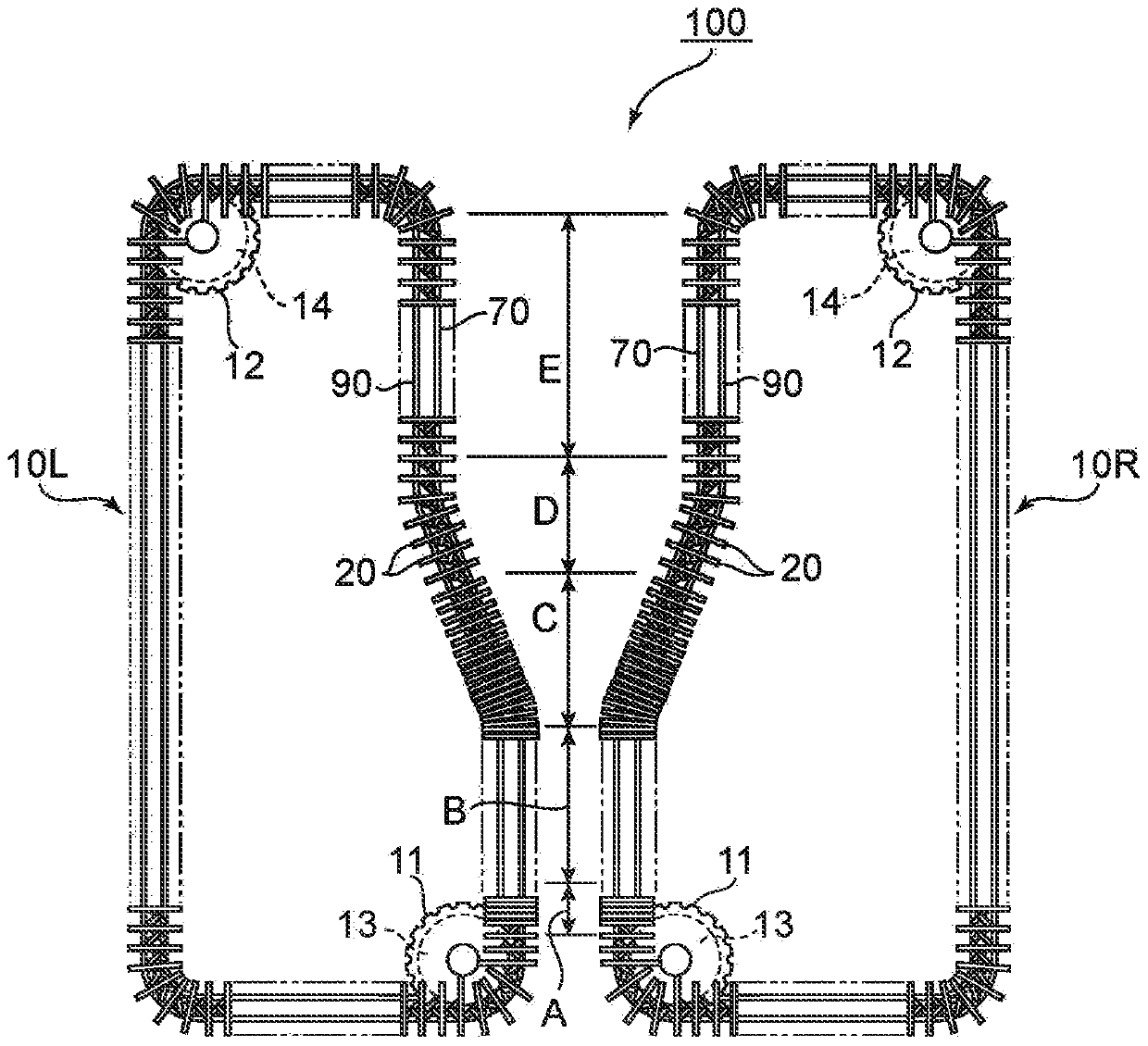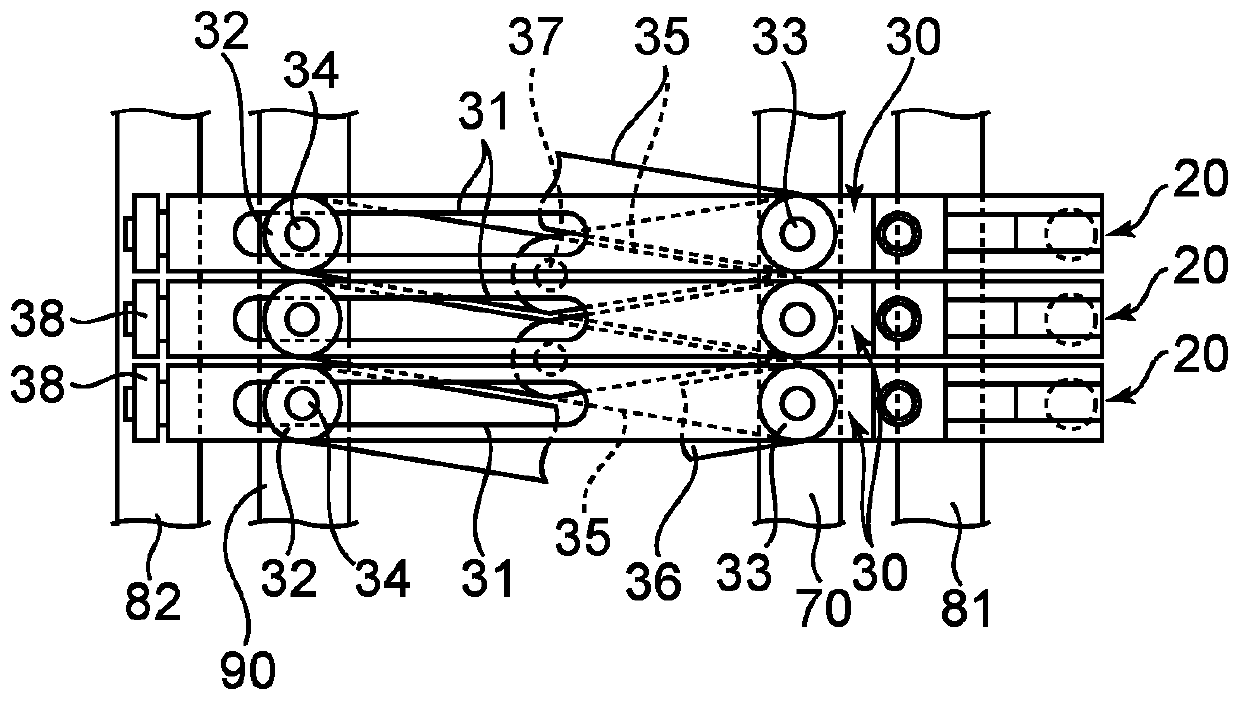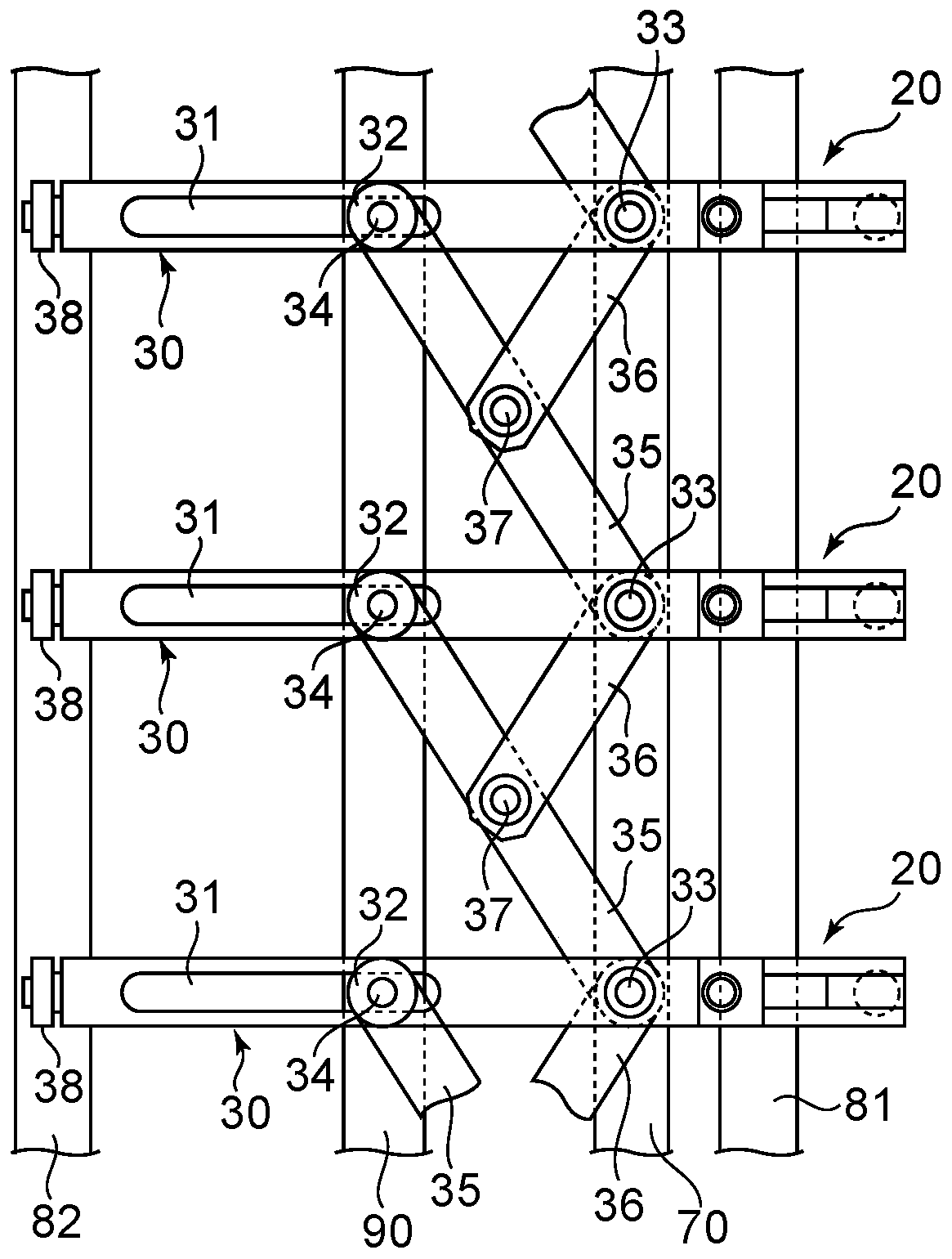Manufacturing method of retardation film
A manufacturing method and technology of retardation film, applied to flat products, polarizing elements, household appliances, etc., can solve the problems of large size change and uneven degree of size change of the retardation film, and achieve less size change and size change Uniformity and high efficiency
- Summary
- Abstract
- Description
- Claims
- Application Information
AI Technical Summary
Problems solved by technology
Method used
Image
Examples
Embodiment 1
[0089] (Production of polycarbonate resin film)
[0090] Polymerization was performed using a batch polymerization apparatus composed of two vertical reactors equipped with stirring blades and a reflux cooler controlled to 100°C. 9,9-[4-(2-hydroxyethoxy)phenyl]fluorene (BHEPF), isosorbide (ISB), diethylene glycol (DEG), diphenyl carbonate (DPC), and acetic acid Magnesium tetrahydrate becomes BHEPF / ISB / DEG / DPC / magnesium acetate=0.348 / 0.490 / 0.162 / 1.005 / 1.00×10 in molar ratio -5 way was added. After the inside of the reactor was sufficiently replaced with nitrogen (oxygen concentration: 0.0005 to 0.001 vol%), heating was performed with a heat medium, and stirring was started when the internal temperature reached 100°C. 40 minutes after the start of the temperature rise, the internal temperature was brought to 220° C., and the pressure was reduced while controlling to maintain the temperature, and the pressure was 13.3 kPa 90 minutes after reaching 220° C. The phenol vapor that...
Embodiment 2
[0099] A retardation film was obtained in the same manner as in Example 1, except that a cycloolefin-based resin film (“ZEONORZF-14 film” manufactured by Zeon Corporation, thickness 100 μm, width 765 mm) was used instead of the polycarbonate-based resin film. . The evaluation similar to Example 1 was performed about the obtained retardation film. The results are shown in Table 1.
Embodiment 3
[0101] (Production of polyvinyl acetal resin film)
[0102] After drying 880 g of polyvinyl alcohol-based resin [manufactured by Nippon Synthetic Chemical Co., Ltd., trade name "NH-18" (polymerization degree = 1800, saponification degree = 99.0%)] at 105 ° C for 2 hours, it was dissolved in 16.72 kg of dimethylsulfoxide (DMSO). Here, 298 g of 2-methoxy-1-naphthaldehyde and 80 g of p-toluenesulfonic acid monohydrate were added, and stirred at 40° C. for 1 hour. After adding 318 g of benzaldehyde to the reaction solution and stirring at 40° C. for 1 hour, 457 g of dimethyl acetal was also added and stirred at 40° C. for 3 hours. Then, 213 g of triethylamine was added to terminate the reaction. The obtained crude product was reprecipitated with methanol. The filtered polymer was dissolved in tetrahydrofuran, and reprecipitated with methanol again. This was filtered and dried to obtain 1.19 kg of a white polymer.
[0103] The resulting polymer was 1 H-NMR (nuclear magnetic r...
PUM
| Property | Measurement | Unit |
|---|---|---|
| glass transition temperature | aaaaa | aaaaa |
Abstract
Description
Claims
Application Information
 Login to View More
Login to View More - R&D
- Intellectual Property
- Life Sciences
- Materials
- Tech Scout
- Unparalleled Data Quality
- Higher Quality Content
- 60% Fewer Hallucinations
Browse by: Latest US Patents, China's latest patents, Technical Efficacy Thesaurus, Application Domain, Technology Topic, Popular Technical Reports.
© 2025 PatSnap. All rights reserved.Legal|Privacy policy|Modern Slavery Act Transparency Statement|Sitemap|About US| Contact US: help@patsnap.com



